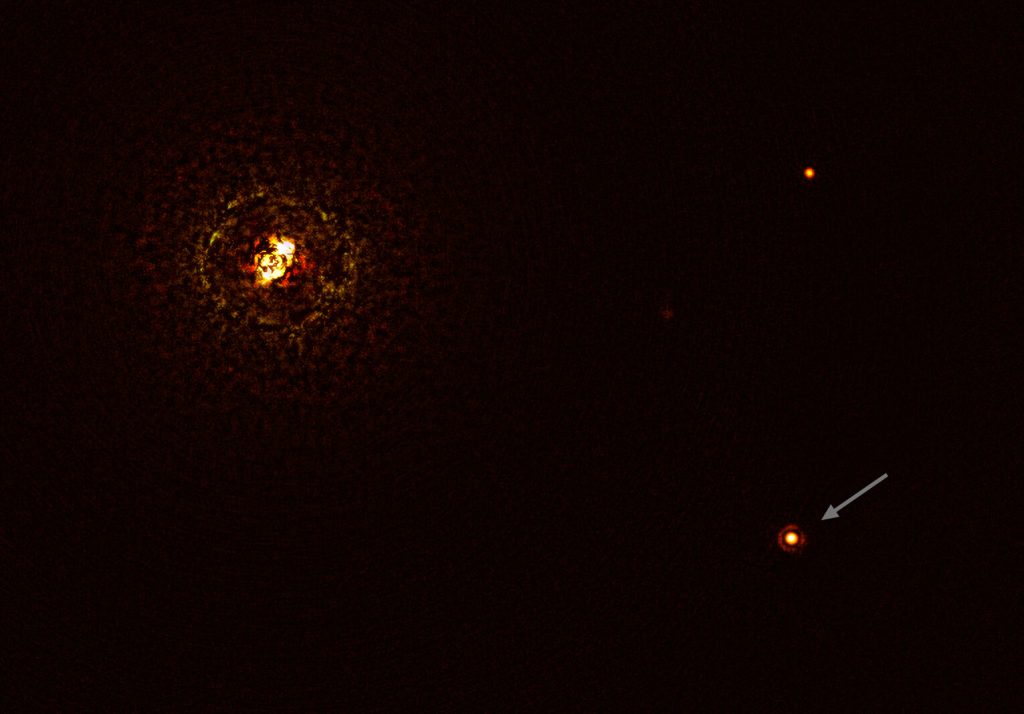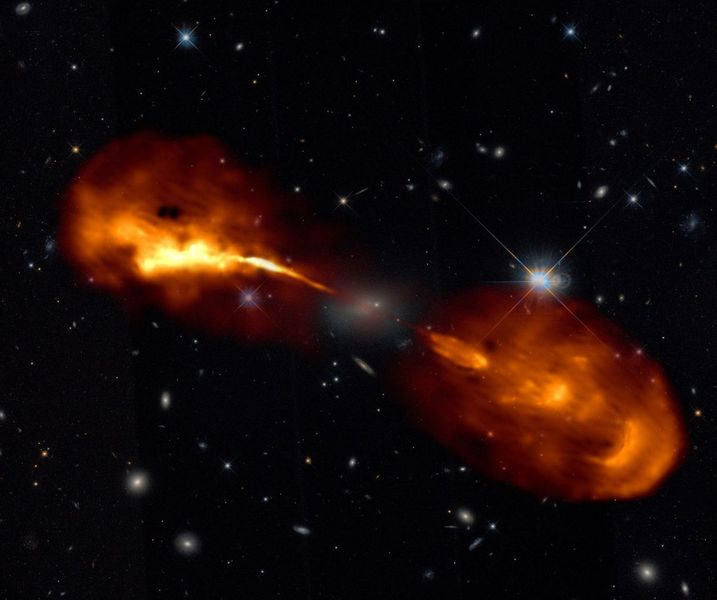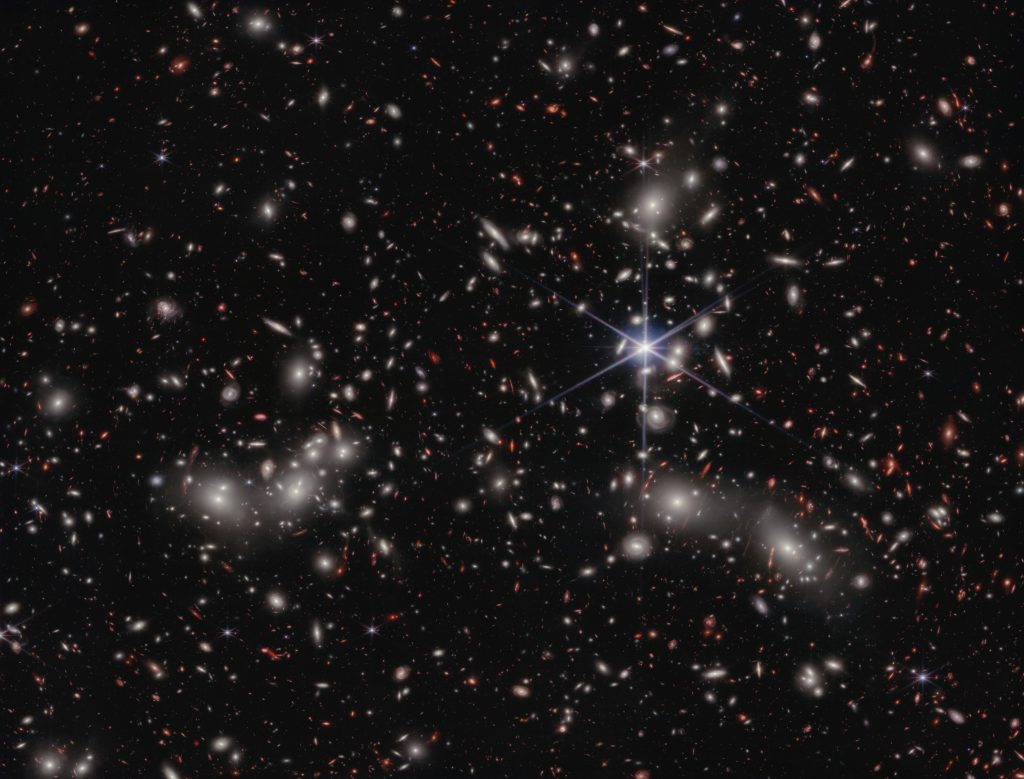A JOURNEY THROUGH SPACE AND TIME
We are moving away at the speed of light from our “place” in the Cosmos, the Solar System.
Nowadays we know almost 6000 extrasolar planets, and this number grows day by day, thanks to increasingly sophisticated time machines.
About 39,736 billion km away from us, around the star Proxima Centauri, we meet the first extrasolar planet in our journey back in time.
At the speed of light, it takes 4 years to reach it. That’s a huge distance, and yet it’s still very “close”.

Planets are much smaller than stars, and reflect a fraction of their light.
Searching for planets is a bit like trying to see a fly around a lamppost in New York… from Rome. It’s a very difficult task, though not impossible.
For example, we look for tiny variations in the light or in the motion of stars, an indirect evidence of the presence of one or more planets.
In special cases, we can even take a picture of some exoplanets by obscuring the dazzling light of the star.
An example is b Centauri b – the dot at the bottom right – orbiting the binary system b Centauri (the bright dot on the left).
The SPHERE instrument on the Very Large Telescope captured it.
The dot in the top right corner is another star in the distance.s
Our journey back in time goes on, among myriads of stars in our Galaxy – the Milky Way.
We are still relatively “close to home”. The light of stars shining in the sky travelled for hundreds or thousands of years before reaching our time machines.
A mix of gas and dust permeates interstellar space, the raw material from which new stars and planets are born.

Interstellar gas and dust glow at wavelengths imperceptible to the human eye.
This image shows a portion of the gas in the Milky Way plane, towards the constellation Scorpius. It combines observations made in radio waves by the ASKAP radio telescope (blue) with infrared observations by two satellites: ESA’s Herschel (red) and NASA’s Spitzer (green).
The brightest areas correspond to star-forming regions.
The visible blue “bubbles” are remnants of supernovae, the last stage of massive stars’ life.
We continue the journey in our cosmic “neighbourhood”: the Milky Way.
From Earth, it appears in the sky as a narrow strip of light: actually, it has the shape of a disk with spiral arms.
It includes about 400 billion stars. Light takes 100,000 years to cross it from side to side.
Earth is halfway between the centre and the periphery of the Milky Way: from the inside, we cannot see its three-dimensional structure.
However, by observing and cataloguing billions of stars over several years, we have traced their distribution and their orbits.

The Gaia satellite is a time machine that scanned the sky to build the most accurate map of the Milky Way, untangle its history of over 13 billion years and try to understand our cosmic origins.
This image shows almost 2 billion stars: the horizontal strip furrowed by dark clouds of dust is the plane of the Milky Way, where most of the stars reside.
The farthest stars among the ones observed by Gaia are located towards the Galactic centre: their light travelled over 20,000 years before reaching us.
We can already go beyond: in the bottom right, we can see the Magellanic clouds, two small galaxies orbiting around ours. Their light started its journey 160,000 and 200,000 years ago, respectively.
We say goodbye to the Milky Way and go on with our journey.
The darkness of space is sprinkled with bright dots: these are whole galaxies beyond our own. We are not that far from “home” yet.
After a few million years, along our time travel at the speed of light, we come across the other galaxies of the Local Group, to which the Milky Way belongs.

There is another large galaxy in the Local Group: Andromeda (M31), which will merge with the Milky Way in 4-4,5 billion years.
The other galaxies in the neighbourhood are much smaller, with the exception of the Triangulum galaxy (M33), portrayed in this image.
It is a medium-sized spiral galaxy, home to several billion stars. M33 is dotted by bright star clusters and reddish clouds of gas and dust, where new stars are being born.
Its light has been travelling for almost 3 million years before reaching the VST (VLT Survey Telescope) in Chile.
We keep wandering in the intergalactic space, leaving behind the Local Group, going further back in time.
We encounter galaxies, and mysterious phenomena occurring among their stars, whose light set off tens or hundreds of millions of years ago.
We continue our journey back into the history of the Universe, at the speed of light.
We have already travelled for over a billion years. We meet spiral galaxies, like the Milky Way, but also huge elliptical galaxies, dwellings of old suns where star formation is no longer ongoing, and irregular galaxies.
We observe large samples of galaxies, venturing into increasingly ancient cosmic ages, while we simulate the physical processes ruling galaxy evolution using supercomputers.

At the heart of galaxies, we find gigantic black holes, millions to billions of times more massive than the Sun. They do not emit light, but quickly “devour” all surrounding matter, resulting in radio waves, X-rays and gamma-rays that travel through the cosmos for billions of years before reaching us. Just like the huge plasma jets, caught in this image by the LOFAR radio telescope, that stretch far beyond the Hercules A galaxy.
We come across immense galaxy clusters, permeated by hot gas shining in X-rays and held together by dark matter, a mysterious substance which does not emit light and can only be detected indirectly, through its gravitational effects upon visible matter.
On larger scales, we perceive the cosmic web, a network of gas and dark matter, filling the entire universe. Galaxy clusters sit in the densest nodes of the cosmic web.
We are very far from home. We have been travelling for billions of years, among hundreds of billions of galaxies, each hosting billions, tens or hundreds of billions of stars.
Our time machines perceive the expansion that gradually draws galaxies apart and nowadays accelerates more and more, driven by the mysterious dark energy.
We learnt how to capture light from the first galaxies which appeared in the history of the Universe. We can spot some of them in this image taken by the James Webb space telescope: faint dots in the background, peeping out beyond other galaxies much closer to us.
In this challenge, our time machines receive crucial help from galaxy clusters, like the Pandora cluster, in the foreground in this image: it is located approximately halfway between us and the primordial galaxies, much farther away. With its huge mass, this cluster acts as a “gravitational lens”: namely, it amplifies the light of more distant sources and allows us to observe them.

We venture out to the first stars, 13 billion and a few hundred million years ago, to discover how they were born, being so different from the stars we observe nowadays.
We go even farther, when there were no stars or planets, and not even galaxies, while the Universe was filled with a mixture of particles of matter and light.
In microwaves, we can observe this ancestral light: this is the cosmic background radiation, which goes back to a mere 380,000 years after the Big Bang. A fossil from the beginning of the Universe, holding the secrets of our cosmic origins.






